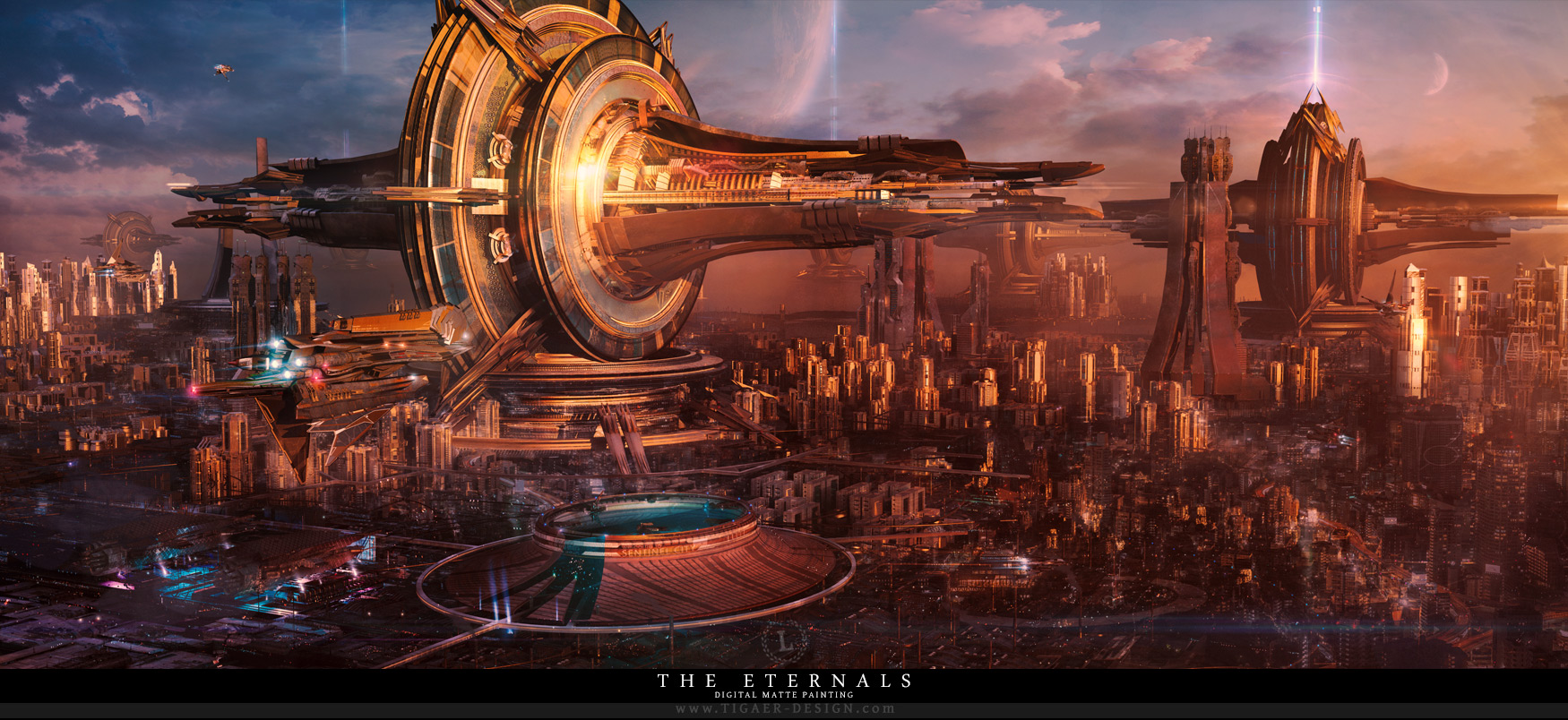Cities of the future begin with connectivity. They are the antithesis of small towns.
A small town is a town that can’t contain you. Instead, it chokes you. It chokes your bigness. You’re too large for it. The design of your mind, everything you’d naturally try to accomplish, all of it is choked down by the small town’s infrastructure, that becomes its barrier against your creation.
The small town isn’t build with the accomplishment of things in mind, and because of it there is no connectivity, because connections are the ways to accomplish things. Nothing functions as you want in a small town, and anything that isn’t planned in its reduced, derelict and mediocre infrastructure becomes nigh impossible to create. The small city is thus a dream crusher. Bringing about anything means bumping repeatedly against walls of obstacles that will not go, until you are drained of vitality, you give up on your goals, and turn to resentment.
Small towns are also terrible for emancipation. Gaining a sense of independence means relying on external means to get your needs met and accomplish your goals, but if the outside world provides you with no tools to accomplish these goals, or keeps them so at arm’s length until the stakes to accomplish a certain thing have completely passed, then your emancipation process becomes a struggle and is marked with heartache.
The mindset of a small town is that the people who reside there have noticed the smallness of the place, but they’ve learned to cope with it by acting like their small concerns are a matter of national security.

But the futuristic city has connectivity at its heart. Its first attribute is space. Bigness. A futuristic city is triumph over smallness. It envelops its inhabitants like a band that grows and stretches as the people within expands. It’s mutable. The idea to choke down its inhabitants didn’t cross its mind, because the futuristic city benefits from people growing – it’s the only way this city expands. Its heart beats at the same time as that of its citizens to create a smooth rhythm, instead of dictating the rhythm of its citizens’.
The futuristic city is the epicenter of the world. The affairs of the city often have an international scale. Other places’ affairs all come together in the futuristic city, the seat of the political shenanigans, the place where the action takes place. Mindsets don’t need to shrink down to the local trivial news, and elevate them to the rank of cosmic importance to make day to day life relevant. What goes on there usually has a genuine, large-scale impact that makes it relevant to not only the people within the city, but to the people living elsewhere. It involves multitudes, it creates connections (even when those connections are about saving the ecosystem from capitalism).
It’s also built with efficiency in mind. The purpose of this city is precisely to accomplish things, and delays and hardships are blockages on the way to accomplishments. Thus, they don’t need to be there. Futuristic cities cut out the middle man, simplifies processes through connectivity, all to make sure that going from point A to point B happens. Not only do you accomplish your basic goals in a futuristic city, you can take it further and thrive. You can continue to accomplish things until you reach ultimate levels of connectivity. For me, growing up in a small town, getting the internet and more GB on my phone was hard. I felt especially thwarted by public transportation, because transportation allows you to go places. In a futuristic city, these concerns are ridiculous and don’t exist, because those problems have been solved long ago.
This town was not as well and these people were fucking working in those shitty areas and somehow they satisfied themselves with it and I could never bloody understand it. What was wrong with those people? I was dissatisfied. There were so many things I wanted there, and I didn’t have them, I felt like I was living in a corner of the world that was ditched and abandoned, it’s not what I wanted. When I’m in Krakow, I feel connected. I feel like the world opens itself to me, I feel like I’m in one of these spots where
Technological advancements
Technological advancements is the first feature of a futuristic city, because it’s what creates the connectivity that’s needed for evolution. It’s what creates the efficiency so characteristic of this progressive place. It’s unsurprising to see this large city archetype always characterized in fiction with extreme levels of technological advancements that are almost obscene compared to their neighbors. These small matters I mentioned like fast internet or developed transportation are the building block of the city and what technology started with. It’s the first stone every other accomplishment has been built on in this city.
Interstellar travel
Interstellar travel is the ultimate form of connectivity, because it’s a connection to the universe. And any city built that accommodates this concept cannot envision anything else but bigness, because it needs to contain the universe itself. There is nothing larger than that, because it creates an open gate to the rest of the universe to pass through.
A futuristic city possessing the infrastructure needed to travel the universe is, in my eyes, the pinnacle of human civilization. It’s pure freedom. Which seems to be the ideal behind most futuristic city concepts.
Dreamfall Chapters / Europolis

In Dreamfall Chapters, set in 2222 in a dystopian Europe, we have a futuristic city sprawling across most of old Europe called Europolis. Europolis is more outwardly a dystopia that can’t pose as a utopia even though it tries.
The utopia looks like badly stitched together propaganda, and that’s part of the charm. t also gave the place a unique feature, the unity present among the inhabitants. Most people are united in their mutual dislike of the place’s conditions and their wish to do something about it. Cultures are so mingled, slangs are swear words borrowed from every language in the continent.
Europolis is like a fancy poor people city. Its inhabitants know they live in a place that’s “shit”, and they both love and hate the place, because there’s next to nothing they can do about the conditions they live in, besides toil and rage against the powers that be. It gave the city an air of decadence and wretchedness that I always appreciated. That unity feels like a vast, well-connected web sprawling across a large geographical area, instead of the pack mentality that’s sometimes present in small neighborhoods. People in Europolis felt like a big family united against their living condition, fighting for it and renting about it in their smoking break.
That decadence is also the stereotype of the advanced city where everyone wants to live, only to be crammed into tiny apartments with minuscule windows facing another equally grim block of flats. It’s in the lack of sunlight, replaced by a virtual sun located in a plaza, and constant reminders enunciated by the surrounding flying bots not to expose yourself to sunlight because it’s “bad for you”.
What’s most significant to its dystopia aspect is how shabby the city is. It’s dilapidated, and the only thing that does shine is the technology, in the form of obnoxious ad-bots flying around town harassing you into getting insurances or buying stuff you don’t want or need. The story also drops us in the middle of a charged political campaign that’ll determine Europolis’ next leading party.
The Hunter Games / The Capitol
The Capitol always attracted me because of its opulence. Like other futuristic cities, it’s a place that enables change and fast-paced progress. There is no stagnation in the Capitol. The technology is so advanced, it’s obscene, because of how it built this empire of prowess by sucking the life out of the districts around it.
Every aspects of daily existence has been optimized for speed and utility. The swift communication of news and ideas enables this police state to exert its dominion over everything else. For more mundane aspects of daily life, beauty processes have become swift, painless routine helped by ultra-modern, cutting edge technology. Technology behind entertainment is so smooth, entertainment has taken over the country. We see extremely advanced versions of projector screens showing the latest piece of stupidity the Capitol is ready to feed its citizens.
Military power has also seemingly reached a height: military technology often looks brusque and grotesque – the primary tool for military technology being damage. But Capitol military technology removes this grotesque aspect and refines weapons until they are ultra performant, go beyond what you’d expect of a traditional weapon, and whose very looks are a sign of efficiency. It makes Capitol military power deadlier and difficult to rival with.

And at the height of these technological achievements is the Hunter Games’ arena. It’s what nowadays’ reality TV show settings wish they were. Instead of a regular, good looking house, we have a large physical space easily manipulated through a screen, where different events can be triggered in always newly designed environments. The arena is like a live video game, a prowess of technology and programming.
The Capitol is a dystopian city pretending to be a utopian city. It pours immense budget into its technology to make the city function like the most well-oiled machine, to the point that the inner workings of the city become completely invisible, to only leave the good face of entertainment visible to its citizens, and its might and inaccessibility to the district. Its governmental oppression and mass brainwashing of the masses makes it a dystopian place, parading as a utopia.
The explosion in numbers is also what gives that futuristic tone to a well-structured city. The large city archetype I described previously wanted to expand to allow its inhabitants to expand. The pinnacle of a futuristic city has become so expansive, because it had to accommodate for the growing number of people that inhabits it.
Population explosion is, oddly, another form of connectivity. There’s something to large numbers of people that multiples the possibilities for connections, and that removes the factor of loneliness. Not that it isn’t possible to feel alone even with people – but the chances to find someone, or multiple people, who fit you and whom you fit is doubled, quadrupled, etc. Everywhere you go, there is a person, there are multiple people beside you, leaving no empty corners in the world.
I might add more city examples in the future, but that is it for now. If you’ve enjoyed this article, consider subscribing to the newsletter for more.
“Is this worth watching?”
Scathing reviews that aren’t afraid to tell like it is, taking a look at a slurry of media,
from books, games, to series & movies.
Never miss an update.









[…] submitted by /u/yumiifmb [link] […]